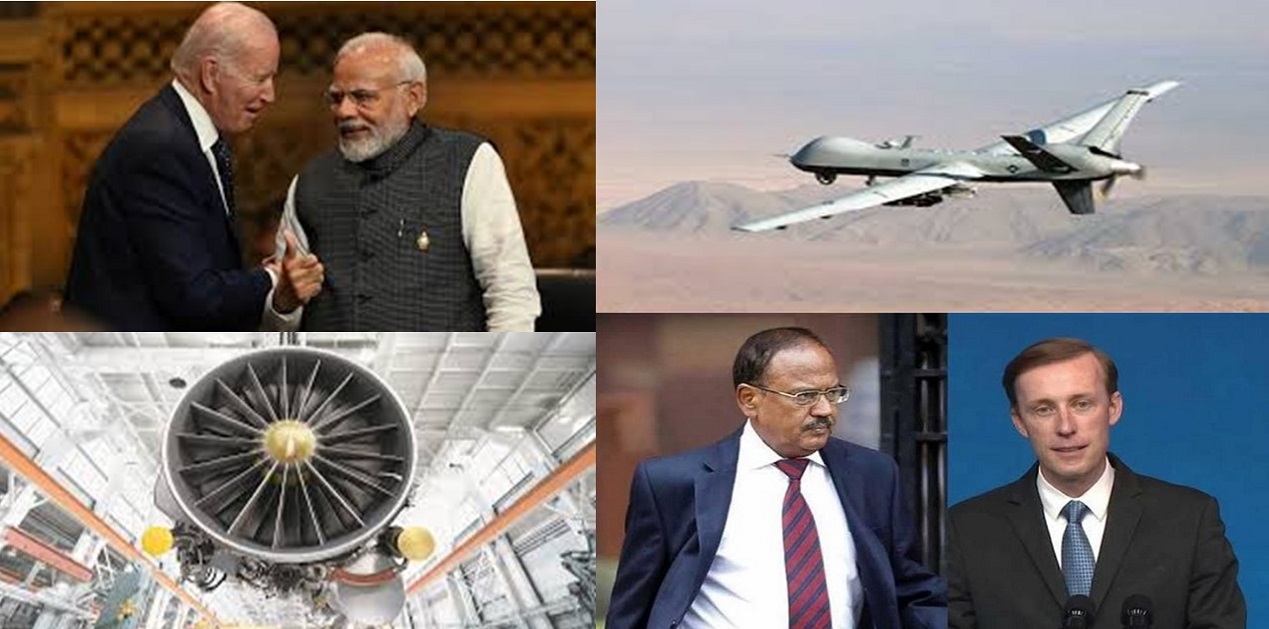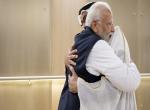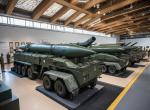(This article may be read in conjunction with an earlier article by the same author, titled, “Next Phase of India-US Strategic Partnership: Maximise Hope Without Underestimating Challenges”.
Prime Minister Modi recently concluded a landmark state visit to the US. That the visit is potentially transformational, is evident from the expansive Joint Statement issued.[1] To implement the ambitious shared vision, what is now required is dedicated efforts, by a wide range of stakeholders on both sides, to follow up on the commitments made. Not an easy task but an imperative to further our convergent national interests!
The most significant outcome of the current engagement is the forging of a technology partnership for the future and a roadmap for Defence Industrial Cooperation; with the potential to emerge as a reinforced central pillar of the bilateral relationship. The unprecedented convergence on Critical and Emerging Technologies (CET), reinforcing existing cooperation in science and technology (S&T), has been achieved through the assiduous year-long efforts which commenced in Tokyo in May 2022. An inadequately appreciated fact, however, is that this initiative, on CET (iCET) is not about technology cooperation alone. It is a stepping stone towards India-US strategic and economic convergence; call it `techno-strategic cooperation,’ a hitherto unfamiliar domain.
This analysis is aimed at identifying challenges and suggesting some implementation measures, to make this path-breaking initiative a success.
The nearest equivalent cooperation initiative, in the field of critical technology that India and the US have had in the past, is the ‘Defence Technology and Trade Initiative (DTTI).’ That, however, was confined to the domain of Defence and was steered at the level of Secretary Defence Production, in the Indian Ministry of Defence and the Under Secretary of Defence on the US side. The newly initiated iCET, however, has a much wider scope, extending across military and non-military domains, lending itself to much wider and deeper cooperation. The level of engagement has also been raised to the NSAs level on both sides, enabling attention at the national leadership level.
The most significant challenge is likely to be coordinating activities across 8-10 different verticals (semi-conductors, AI, Quantum, telecommunication, space, high-performance computing, defence technologies etc.), between disparate stakeholders (ministries; departments; public and private sector – large and small industries; business organisations; scientists; academia; innovators; investors; think tanks ……). For each of them, perceptions of the outcome and desired end-state would differ.
While each vertical will have a different trajectory with different plug-in points, the basic challenges related to regulatory mechanisms, licensing and trade restrictions would be similar. Lowering these requires a very strong and dynamic coordination mechanism. The DTTI for this purpose had an `Inter-Agency Task Force (DIATF).’ The US side had also set up an `India Rapid Reaction Cell' at the Department of Defence. Likewise, a similar construct is required for the iCET, under the overall directions of the NSA, being its co-chair (with US NSA). This should form the primary executing and coordinating mechanism, internally as well as bilaterally, with the US.
This mechanism, let us call it, the "Technology Cooperation Inter-Agency Task Force (TCIATF)," could, most appropriately, be set up alongside the Secretariate for the `Strategic Trade Dialogue,’ which has recently been instituted under the Foreign Secretary. The Defence Secretary (or, Secretary Defence Production) and the Scientific Adviser (SA) to the Raksha Mantri (RM), duly incorporated, could address the aspects related to the Defence Industrial Cooperation road map. With a better perspective of the national goals, this task force would be able to accord desired impetus and provide strategic guidance to an otherwise technically oriented domain-specific exercise.
The TCIATF, in addition to the members given above, must have suitable representation drawn not only from the government but also from the private sector, since many of the technology cooperation programmes would be driven and led by private R&D/ industry. The task force could include representatives drawn from: hardcore technology experts (scientists or members of academia); industry (private and PSUs); relevant specialists and users from the Defence and security domain; investors; business organisations; legal experts from relevant fields; and think-tanks with the capability to blend technology with a strategic perspective and to provide a platform for multi-domain track 2 dialogue. Being at the directional level, the composition must remain restricted, preventing it from becoming a `talk shop.' It must maintain the dynamic character of a `Task Force (TF).’
A lot of unrealistic expectations prevail about the transfer and absorption of technology - about the process, cost, and gestation period that it entails. It would be desirable, that a detailed road map of cooperation is made for each vertical by a `Steering Committee’ of domain specialists. The time-lined road map should define the progressive co – development of technology, prototyping of products, production and its final manufacturing and marketing for monetization and capability development. The outline roadmap be disseminated in the public domain to guard against motivated misinformation and unrealistic expectations.
The composition of the steering committees could be akin to TCIATF, but more specific to the particular domain. While functioning under the overall guidance of TCIATF, the steering committees should also be authorized to interface with corresponding, domain-specific, structures on the US side and create Joint Working groups for detailed coordination.
A common perception taking root, particularly in the business community, is that all restrictions/ barriers to strategic technology and trade would be removed or substantially lowered, following the development of an effusive relationship. A similar `euphoria’ was experienced on both sides, following the setting-up of DTTI. Efforts need to be made to sensitise all that the US regulations like the `Arms Export Control Act (AECA), International Traffic in Arms Regulations (ITAR), and Export Administration Regulations (EAR) and the Indian regulations like Defence Acquisition Procedure (DAP – 2020) have been conceived as "guard-rails" (not as roadblocks) and would be lowered on both sides, (only) with due diligence. An endeavour should be made to resolve issues, within existing regulations, to the extent possible. A fresh perspective is however, required in reviewing existing regulations and lowering / removal of barriers due to changing geopolitical environment, and due to the availability of at least some technologies and advanced weapon systems through alternative sources. This reality, has, in any case, diluted the original rationale on which these regulations were formulated. Pragmatism on this account, on both sides, would help.
Recent, media reports also suggest an industry effort underway to urge an early conclusion of the "Security of Supply" and "Reciprocal Defence Procurement" agreements, a dialogue on which commenced during the recent visit of Secretary Llyod Austin.[2] The relevance of this, to both countries, is of making the supply chains resilient; and to the Indian industry, in qualifying to plug – into the cash-rich, US defence procurement system. While this is a welcome aspiration, greater diligence is required over the commitments of “reciprocity.” Experience suggests, that certain elements in the industry may start expecting `non-competitive’ access to the other’s acquisition system, or insist on procurement of specific platforms, for reasons of developing interoperability. While understandable in the long run, it may not be affordable or possible just yet.
The proposed acquisition of MQ 9B drones and the MoU between GE Aerospace and HAL for the co-production of fighter jet engines in India, for the Air Force, has drawn immense attention. A clear distinction needs to be made between the former (drones), being for building current operational capability, for India’s requirements, "here and now," while the latter is for long-term capacity building. Since bridging the operational capability gap with China, riled by India’s convergence with the US is time-critical, the factor of determining indigenous content for these becomes a secondary factor. For the GE engines, however, which strengthen long-term defence industrial capacity, concerted efforts must be made to on-shore assembly/ production, incorporate high indigenous content, and acquire maximum technology, being a more diligent process.
The environment also needs to be sensitised to the long gestation period and the progressive steps involved in such an endeavour. The path followed by Italy, of initially setting up a ‘Final Assembly and Check out facility (FACO) for F-35s in 2014; upgraded to ‘Maintenance, Repair, Overhaul and Upgrade (MROU) facility in 2022, and possible future augmentation, may be illustrative. The incentives provided by the Italian government to attract on-shoring of this facility may also be worth exploring.
Related to this, despite importing drones and aero-engines, India’s ongoing indigenous efforts must not be dampened and the experience gained should be utilized to make these projects a success. This would be in the long-term interest of Atmanirbharta. With India's impeccable credentials of maintaining the technology security of diverse defence partners, these aspects need to be negotiated appropriately with concerned defence contractors on the US side.
It merits appreciation that India’s greatest strength is its talented, qualified, and skilled human resources; innovators and start-ups, residing in India. They are in immense demand globally. Partners would do well to appreciate the value of this asset and not expect to lure them cheap! It would also be in order to slot the talent appropriately, all along the value chain, including at the high end. Making them partners in creating niche technologies, in the IPRs generated and in the commercial benefits likely to accrue, will make this relationship lasting. Even in the field of industry, including MSMEs, Indian entrepreneurs should not be content permanently getting themselves slotted as mere component suppliers and lower-tier vendors. They should strive to plug themselves at higher ends of the value chain and contribute towards mutual capability development. Quite like the Defence Threat Reduction Agency (DTRA) and Emerging Capability Policy Office, on the US side, actively participating in technology cooperation, the Indian Defence organisations must also participate to ensure capacity building and threat mitigation, through the technologies co-developed. It is also for consideration of India’s DRDO to use this relationship to fill the existing gaps in legacy technologies, through this partnership. This would reduce dependency on other existing defence partners.
The recent state visit of the PM to the US and the intense activities that took place in the run-up to it has heightened the realisation of mutual dependence and presented us with unprecedented opportunities. These must be capitalized with intense efforts of stakeholders on both sides. The field of “techno-strategic cooperation,” being unchartered hitherto, would remain susceptible to the turbulence of an uninformed and motivated discourse, best mitigated through transparency and awareness.
Finally, a fundamental fact to be appreciated is that the underpinnings of technology cooperation would rest on political and strategic convergence. Endeavour towards which must continue.
References
[1]India-USA Joint Statement during the Official State visit of Prime Minister, Shri Narendra Modi to USA
[2] Pubby Manu. Two Key Pacts to Open US Defence Sector for Indian Firms. The Economic Times. June 22, 2023. https://economictimes.indiatimes.com/news/defence/two-key-pacts-to-open-us-defence-sector-for-indian-firms/articleshow/101171682.cms?from=mdr
(The paper is the author’s individual scholastic articulation. The author certifies that the article/paper is original in content, unpublished and it has not been submitted for publication/web upload elsewhere, and that the facts and figures quoted are duly referenced, as needed, and are believed to be correct). (The paper does not necessarily represent the organisational stance... More >>









Post new comment